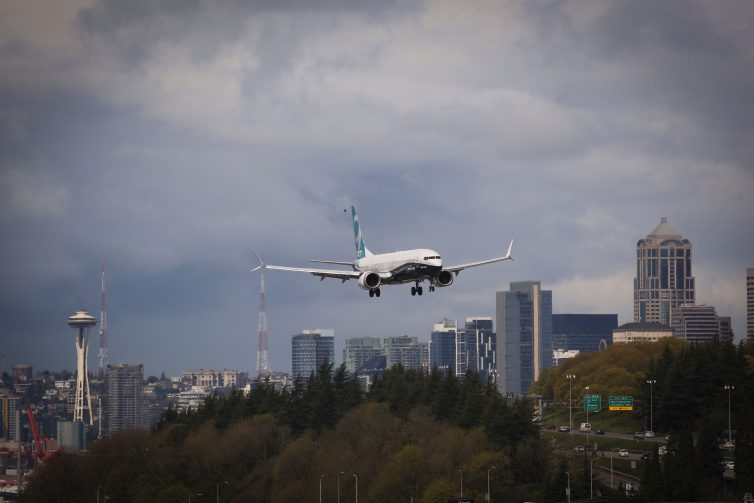
The first 737MAX-9 with Seattle in the background – Photo: Boeing
Boeing’s 737 MAX 9 took to the skies for the first time on April 13 from Boeing’s plant in Renton, Washington. I had the privilege of being able to watch it take off with fellow aviation geeks on a hill overlooking the airfield. After takeoff, my photographer and I headed to the Boeing Delivery Center at Boeing Field in Seattle, where the plane would land that afternoon.
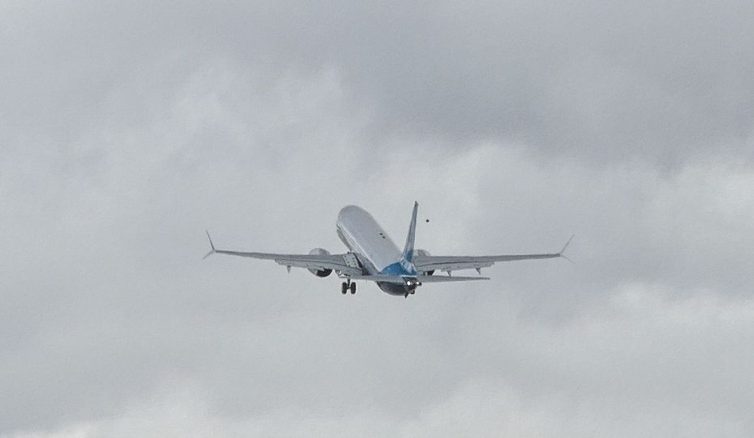
The Boeing 737 MAX 9 flies for the first time – Photo: Jonathan Trent-Carlson | AirlineReporter
As we waited for Captain Christine Walsh and First Officer Ed Wilson to complete their tasks in the air, Boeing treated us to boxed lunches. As we ate, Boeing Vice President/Chief Engineer and Deputy Program Manager for the 737 MAX program, Michael Teal, talked to us about the airplane and the 737 MAX family.
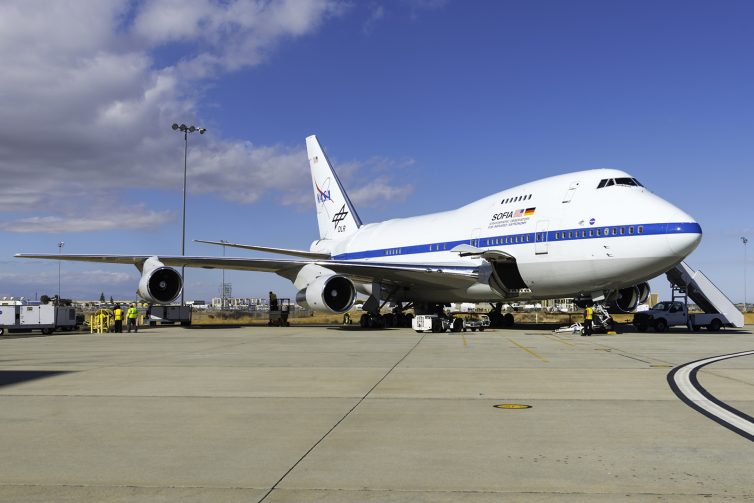
This is N747NA, better known as SOFIA- the Stratospheric Observatory for Infrared Astronomy – Photo: Bernie Leighton | AirlineReporter
You know, despite being a carbon-based life form and therefore largely composed of water molecules – that doesn’t mean I have to like water vapor.
It’s annoying. Think about it? You come in from outside into a warm room and your glasses fog up. Water vapor condenses and produces fog, which keeps me from flying. Sometimes, water vapor even contains annoying minerals resting in solution that can damage precision electronics. If you think I am annoyed by water vapor, talk to an astronomer! It’s worse for them.
Imagine being on the only habitable planet you know of, but having the atmosphere that keeps you alive act like a giant opaque blanket. Gross, right? That’s Earth!
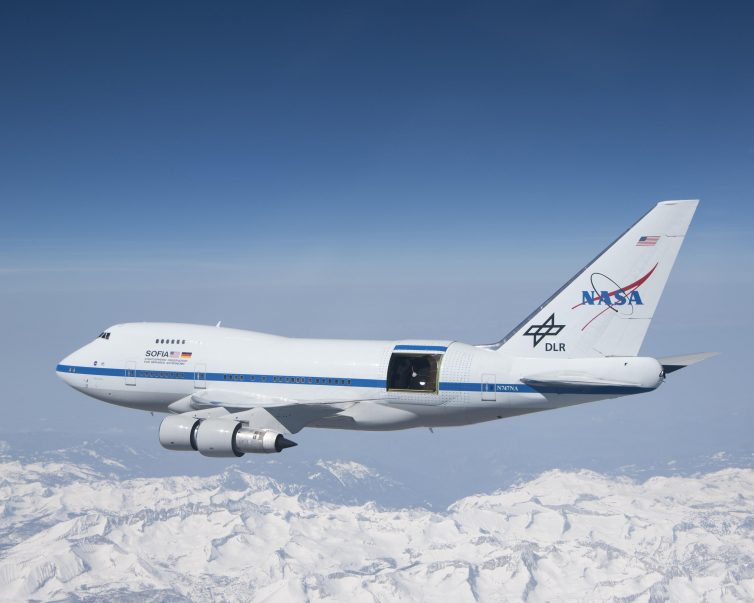
With the sliding door over its 17-ton infrared telescope wide open, NASA’s Stratospheric Observatory for Infrared Astronomy ’“ or SOFIA ’“ soars over California’s snow-covered Southern Sierras on a test flight in 2010 – Photo: NASA
Now imagine that you want to look into the vast reaches of the cosmos, at wavelengths below what the human eye can see, which also happen to be even more affected by the water vapor that resides within the lower atmosphere. A recipe for despair.
The best way to get above the earth’s vapor-barrier would be to build a satellite. I think everyone agrees on that.
If, long after your natural life ends, the billions of dollars in funding you requested to build a satellite is approved – they might name it after you and your grad student’s grandchildren may be able to profit from the data. That doesn’t seem like the best idea for continuing research at a regular tempo does it? What do you do? Well, beyond actually funding scientific endeavors more, there is a second choice.
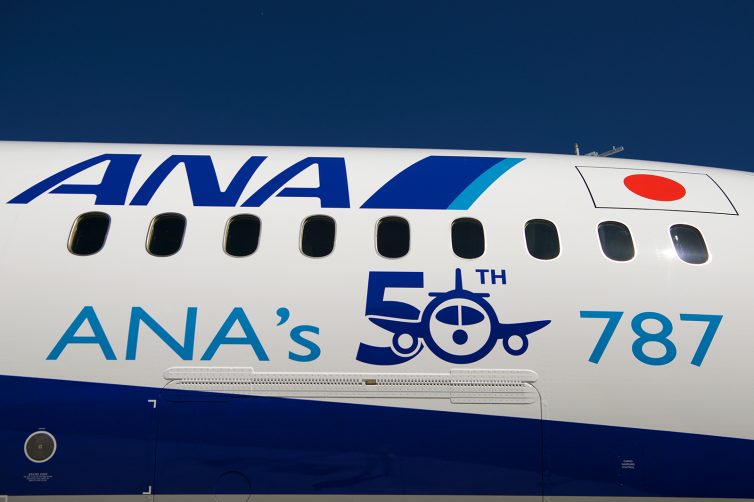
It’s nice when the plane tells you the article’s title – Photo: Bernie Leighton | AirlineReporter
Roughly five years ago, ANA took delivery of its first Boeing 787 Dreamliner. More than that, it was the first 787 to enter commercial service.
Twenty million passengers, three hundred thousand flying hours, and one hundred twenty five thousand flights later, they are now at fifty. That calls for a party.
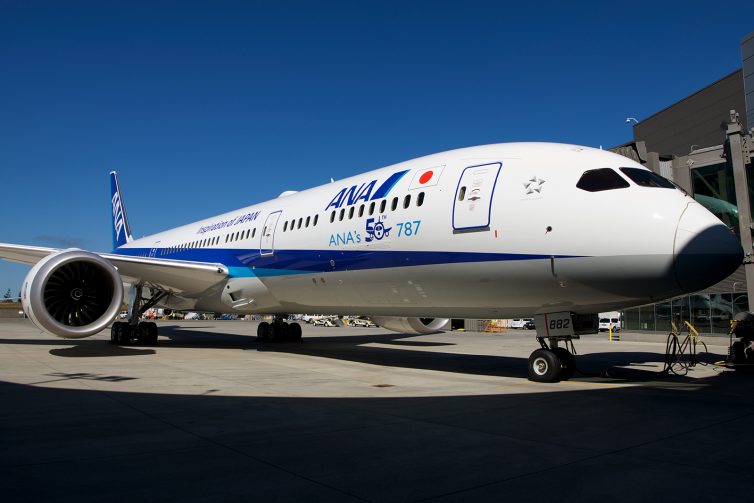
ANA’s newest 787-9 is also their 50th – Photo: Bernie Leighton | AirlineReporter
ANA, took this event as an opportunity to reflect on their involvement with the 787 program.
Clearly, they love it. Though the initial order was for fifty, they now have a further 33 coming after this one. Compared to the 767, this aircraft saves them 98 million U.S. Dollars a year in fuel and 20% in maintenance. These figures are why ANA has been able to use the 787 to open markets that did not seem previously possible. Soon, they will fly to Phnom Penh Cambodia; but the big news is Mexico City.
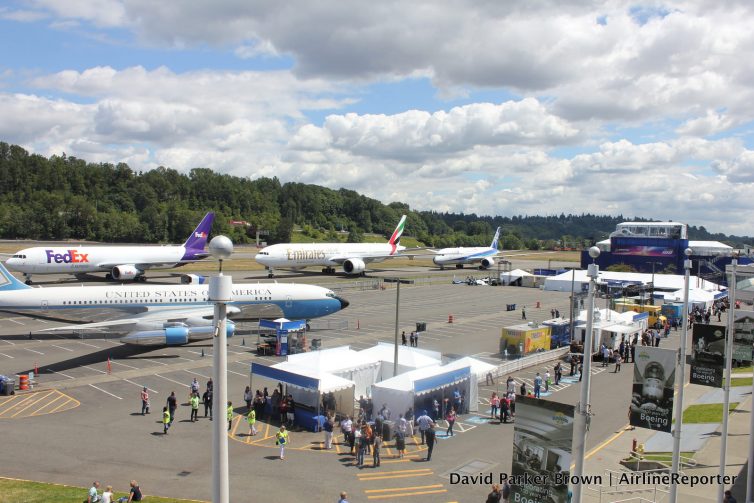
Getting set up for the special 100th celebration, next to the Museum of Flight in Seattle, WA
In the scheme of how long the universe has existed, 100 years is barely a speck in time. But in the world of aviation, it is one heck of a long time… and a huge chunk of human flight’s existence.
It is crazy to think that the Wright Brothers first flew on December 17, 1903 and just over 12 years later, William Boeing had the foresight to create his own aviation company (called “Pacific Aero Products Co” until 1934). I am not going to go into the vast history of Boeing — there are plenty of places where you can read about it, but if you have never heard of the company before, let me give you a basic rundown.
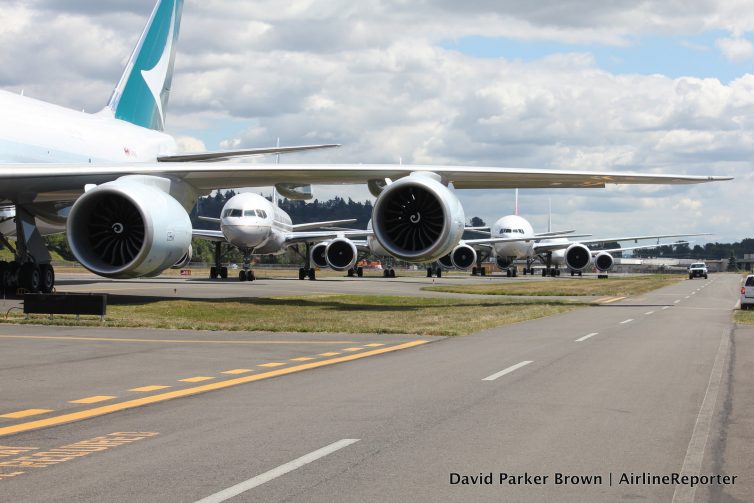
Part of the Boeing 7-series lineup at Boeing Field
About 100 years ago (July 16, 1916), William Boeing created his company, which since then has made lots of cool flying machines and defense tools, and shot cool stuff into space, along with making some other oddball contraptions. So now that we are all on the same page… let’s party!
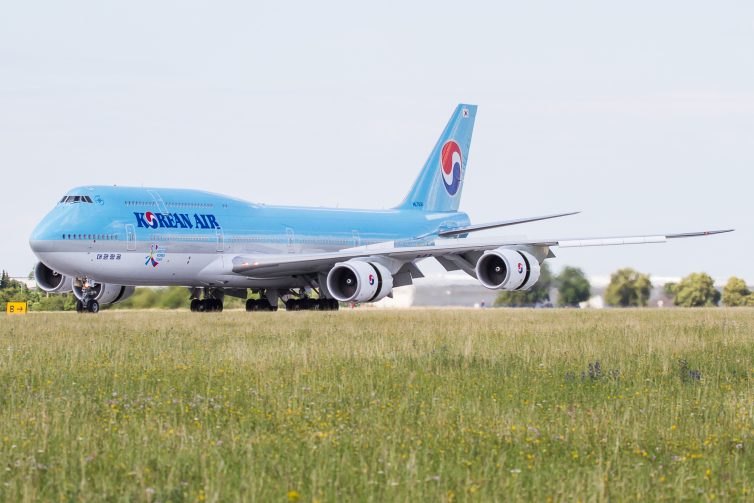
The first ever Boeing 747-8I to visit Prague arrives on a hot summers day – Photo: Jacob Pfleger | AirlineReporter
The 1st of July not only marks the start of the summer school holidays in central Europe, it is also a big day on the local aviation calendar. Last year, Emirates debuted the Airbus A380 on the Dubai-Prague route to celebrate five years of service. This year was no exception, as Korean Air announced the launch of Boeing 747-8I services on the Seoul-Prague route from the 1st of July until the 30th of September.
While the Korean Air 747-400 is no stranger to Prague during the peak summer travel season, this was the first time the carrier announced the route would be operated by the Boeing 747-8I, the longest aircraft in commercial passenger service today. Korean Air had previously operated a one-off Airbus A380 service to Prague, and if this event was anything to go by, I was quite excited to be part of this historic moment. Not only was this the premier of the 747-8I in Korean Air colors in Prague, it was also the first-ever flight of the aircraft type to the town — there have not even been any cargo versions.








